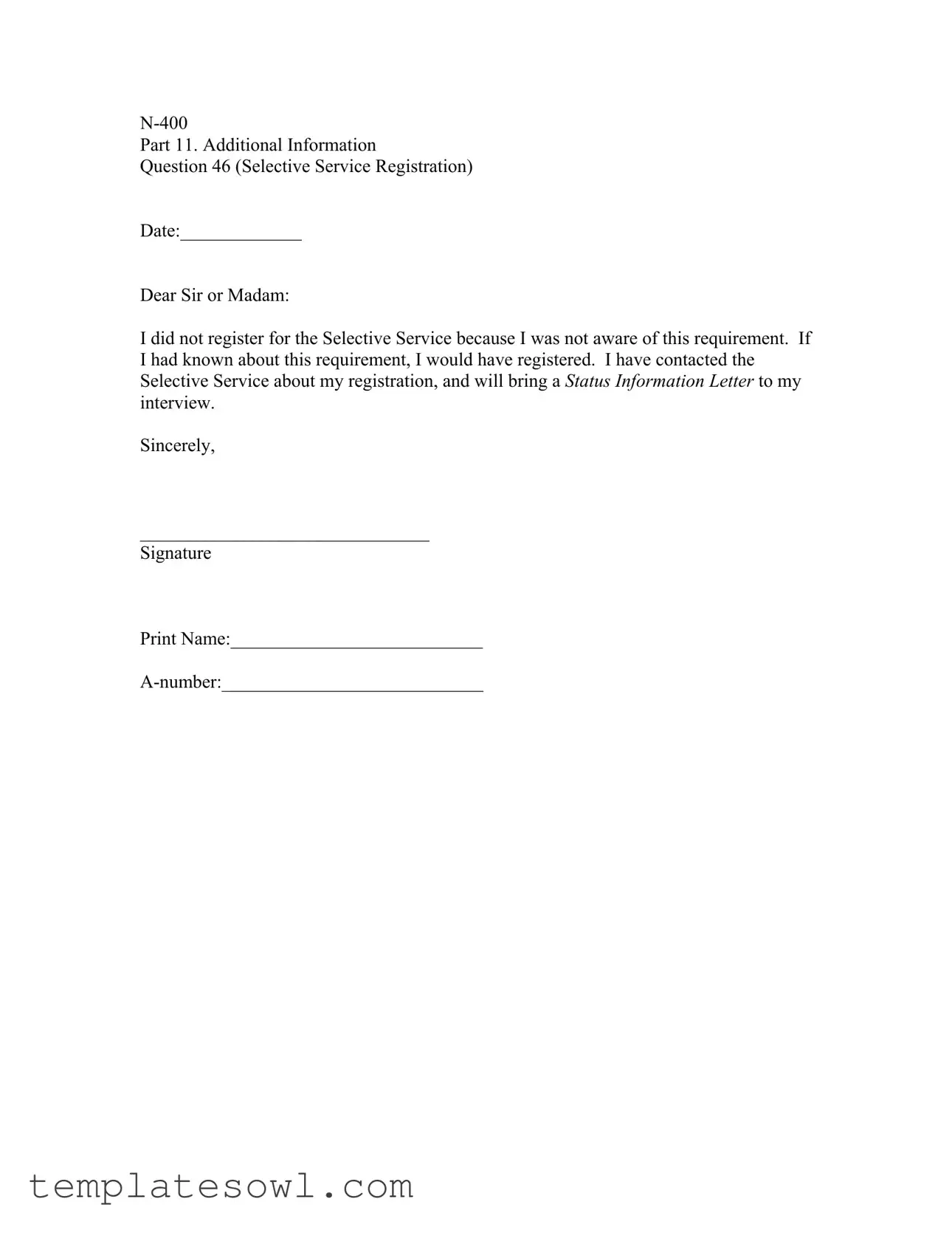What is the purpose of the Letter Sample of Failure to Register form?
This letter serves as an explanation for individuals who have not registered for the Selective Service. It's particularly relevant for those applying for U.S. citizenship through Form N-400. The letter provides an opportunity to acknowledge the oversight and clarify the reasons behind the failure to register.
Who needs to submit this letter?
Individuals applying for naturalization who did not register for the Selective Service must submit this letter. This is especially important for male applicants between the ages of 18 and 26 who are required to register. Including the letter with your N-400 application helps to provide context and demonstrate your willingness to comply with U.S. laws.
What should I include in the letter?
In your letter, include the date, a statement acknowledging your failure to register, and an explanation that you were unaware of the requirement. Additionally, mention that you have contacted the Selective Service and will present a Status Information Letter during your citizenship interview. This information helps to clarify your situation for the reviewing officials.
How can I obtain a Status Information Letter?
You can obtain a Status Information Letter by contacting the Selective Service System. This letter will confirm your registration status and is essential for your interview. You can request this document online, via mail, or by contacting their local office for assistance.
What happens if I do not submit this letter?
Failing to submit this letter could lead to complications in your naturalization process. It may result in delays or even denials of your application. It's crucial to address any issues related to Selective Service registration proactively to ensure a smooth application experience.
Will submitting this letter guarantee that my application will be approved?
Submitting this letter does not guarantee approval, but it provides valuable context for your application. U.S. Citizenship and Immigration Services (USCIS) will consider the circumstances surrounding your failure to register. Demonstrating that you have taken steps to rectify the situation will positively impact their decision-making process.
What if I have additional questions about the Selective Service or this letter?
If you have further questions, it is best to consult the official Selective Service System website or seek advice from an immigration attorney. They can provide personalized guidance based on your specific situation, helping you to navigate any complexities associated with your application.
